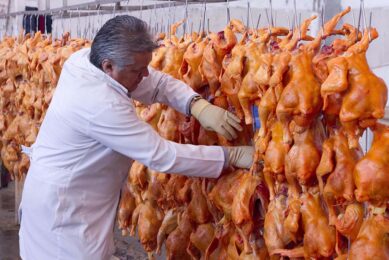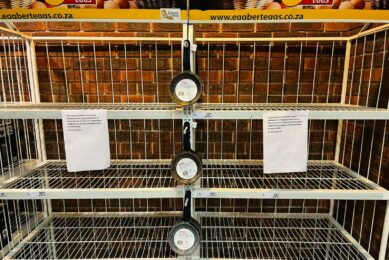Matching trends to improve egg marketing

Egg producer Sunny Queen Australia has aligned its marketing with 8 “mega-trends” to drive sales and improve its market position. The firm’s managing director John O’Hara told the recent International Egg Commission’s Autumn conference how.
Company profile
Sunny Queen is a 100% farmer-owned company with more than 80 years of experience in the industry. Beginning life as the Queensland Egg Board in 1930, Sunny Queen has now become one of the best-known and loved food brands in the country. Sunny Queen farms can be found throughout Australia, from North Queensland to regional Victoria.
Eggs are well placed to be shoppers’ protein of choice by 2030, according to Sunny Queen managing director John O’Hara. And he is on a mission to make it happen in Australia by matching his firm’s marketing to significant trends in consumer shopping habits. He told the International Egg Commission’s autumn conference that all of the eight mega-trends shaping shopper behaviour (see box) applied to eggs. Of those, he said that consumers’ food purchases are primarily driven by brand and product familiarity, alongside convenience, price, taste and health. In launching a successful marketing campaign that taps into those trends, Mr O’Hara said Sunny Queen had been able to engender trust in shoppers when buying eggs. “Our vision is to be the Australian egg company for everybody’s nutritional wellbeing every day,” he said.
Our vision is to be the Australian egg company for everybody’s nutritional well-being every day,” – John O‘Hara, Sunny Queen managing director.
A vital issue for the Australian poultry sector has been defining free-range. “There’s been a lot of issues around it – a lot of discussion about what constitutes free-range and the real hot button was density.” For a long time, stocking densities were a controversial topic and until early last year there was no legal definition of a free-range bird. So the government introduced a law which states that in order to be marketed as free-range, eggs must meet a set of standards, including that hens are offered “meaningful and regular access” to the outdoors and that they are stocked at no more than 10,000 birds per hectare. Producers are also required to “prominently state” the stocking density on egg packaging.
Opportunity
While Sunny Queen supported the new law and stocking density, it decided to go further and make a point of difference with its free-range hens. “Our research showed a growing opportunity to launch free-range eggs at 1,500 birds per hectare,” said O’Hara. “Consumers were looking for more clarity; they wanted to be able to trust what they buy. They want to be re-assured that hens are happy.” The research further suggested that a free-range product with integrity would ensure the hens that laid them lived a good life. Part of that was demonstrating that the birds have a good quality of life.
So the free-range 1,500 bird strategy was launched. Sunny Queen needed to tangibly define egg types, “own” the standard and offer highly compelling proof and transparency of that ownership, O’Hara explained. In introducing the campaign farms were invested in to ensure that every farm could be shown off. “If we were going to put our farms online, we had to be open and transparent.” And to demonstrate the idea that the birds had enough space, the equivalent range per hen was matched to a king-size bed, imagery which featured prominently on marketing material throughout the campaign. The marketing line was: “Every girl needs her space”. “The move was a success,” said O’Hara. A subsequent advertising campaign further reinforced the distinction between the legal standard for free-range and Sunny Queen’s offering, with the slogan “Just like free-range eggs, only free-er”. The ads were on-pack in supermarkets and billboards. “We wanted to tap into the emotions of consumers and gain trust.”
Consumers were looking for more clarity; they wanted to be able to trust what they buy. They want to be re-assured that hens are happy.” – John O‘Hara, Sunny Queen managing director.
Social media
A second initiative introduced was the Sunny Queen “Chook Tracker”. “Consumers didn’t know what free-range meant, so we wanted to show them.” An on-farm webcam allowed shoppers to look at one of the farms but a new initiative took this even further. The firm introduced “Dotty the hen” and pointed out that shoppers could follow her movements online, using digital media to reinforce the message. “We use every means at our disposal to make sure we can connect with our consumers and potential consumers.”
He added that Facebook has played an important role. “We want to make sure that when our shoppers are interacting with us, they are entertained and informed,” explained O’Hara. The company has grown its social media following as a result and on Facebook now has more than 100,000 engaged users and 263,700 page likes, delivering almost four million impressions. The upshot of the activity is that “we outperform our competitors on almost every measure,” he said. Market share grew by 16%, compared with the previous 26 weeks and Sunny Queen is five-points up.
“It’s all about making consumers see positive things about your product.” If you think about the 8 megatrends and put them into action by picking out the ones that help solve a problem, you can get results like this. “We have a wonderful natural, affordable protein – all it requires is focus and an innovative approach.”
The 8 megatrends shaping consumer behaviour
- Health and Wellness – Shoppers are seeking to improve well-being.
- Sensory and Indulgence – Looking for quality, variety and immersive experiences – and willing to pay a premium for these.
- Comfort and Uncertainty – Consumers value safety, tradition and simplicity. They don’t want re-assurance because of growing uncertainty.
- Smart and Connected – Shoppers are increasingly reliant on connected devices – and even the smallest business can capitalise on digital technology in its marketing strategy.
- Easy and Affordable – Time and money are perceived as the great scarcities of modern life. Shoppers are continually looking for ways to maximise these limited personal resources.
- Individualism and Expression – Consumers place value on self-expression and personality.
- Sustainability and Ethics – Shoppers are increasingly concerned about the social and environmental impact of the products they are consuming.
- Evolving Landscapes – Consumer behaviour is being shaped by underlying socio-demographic and socio-economic trends impacting on society as a whole.
 Beheer
Beheer








 WP Admin
WP Admin  Bewerk bericht
Bewerk bericht